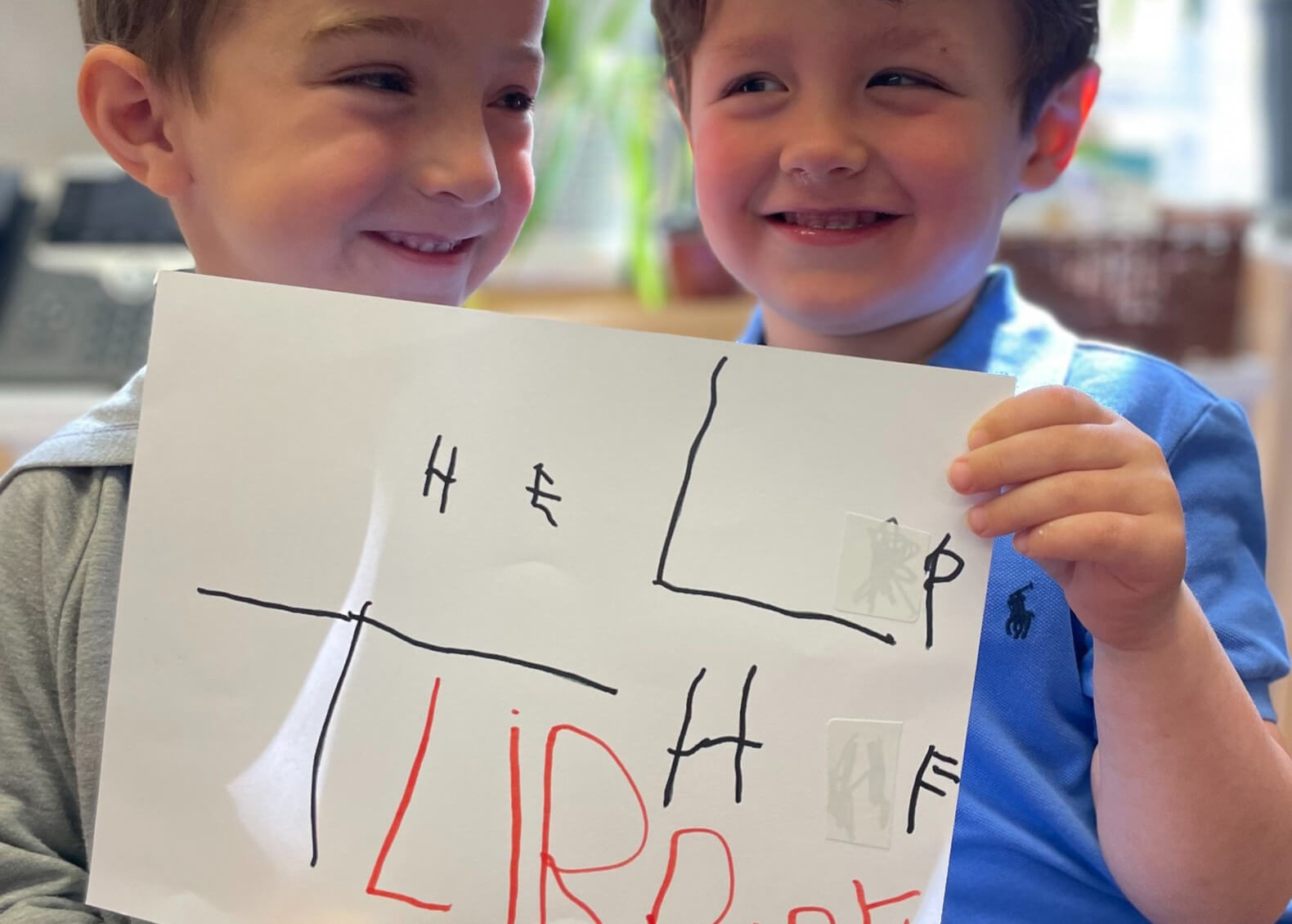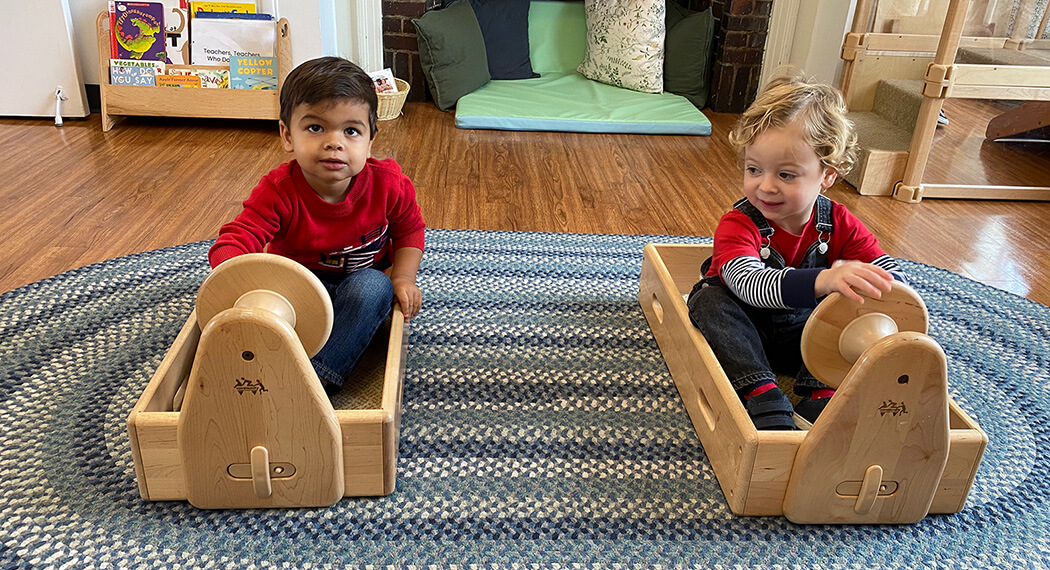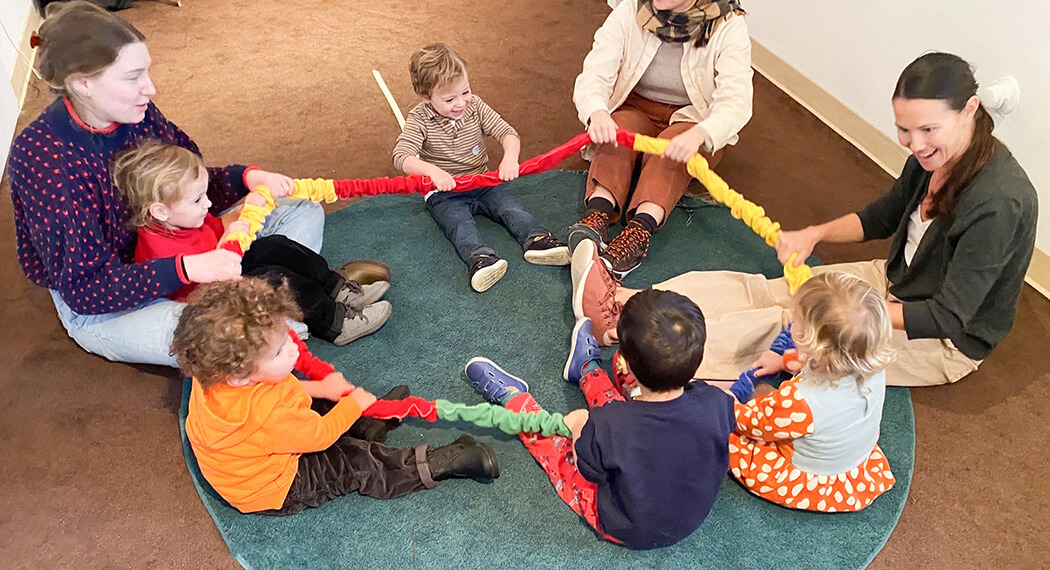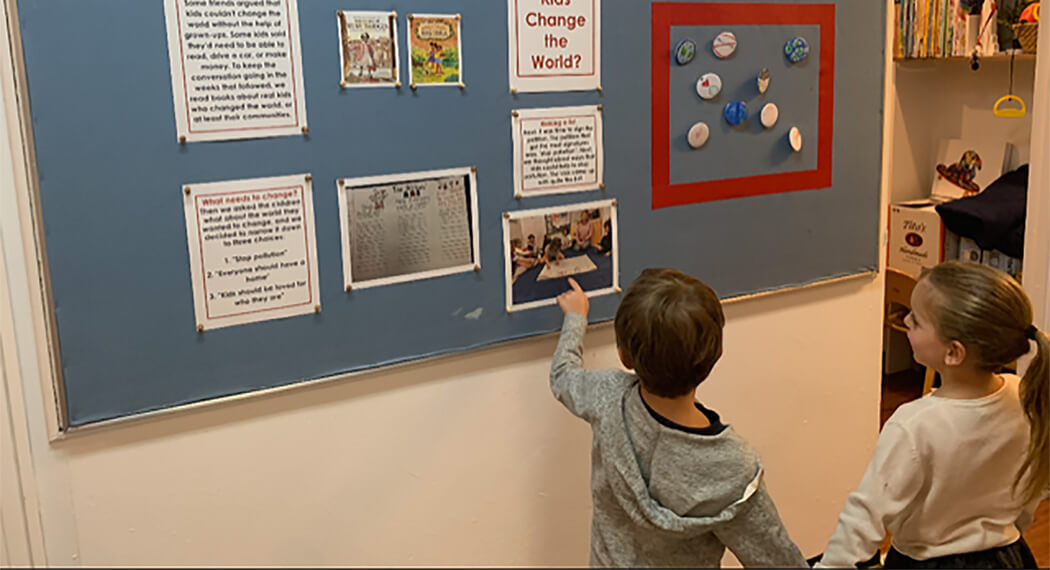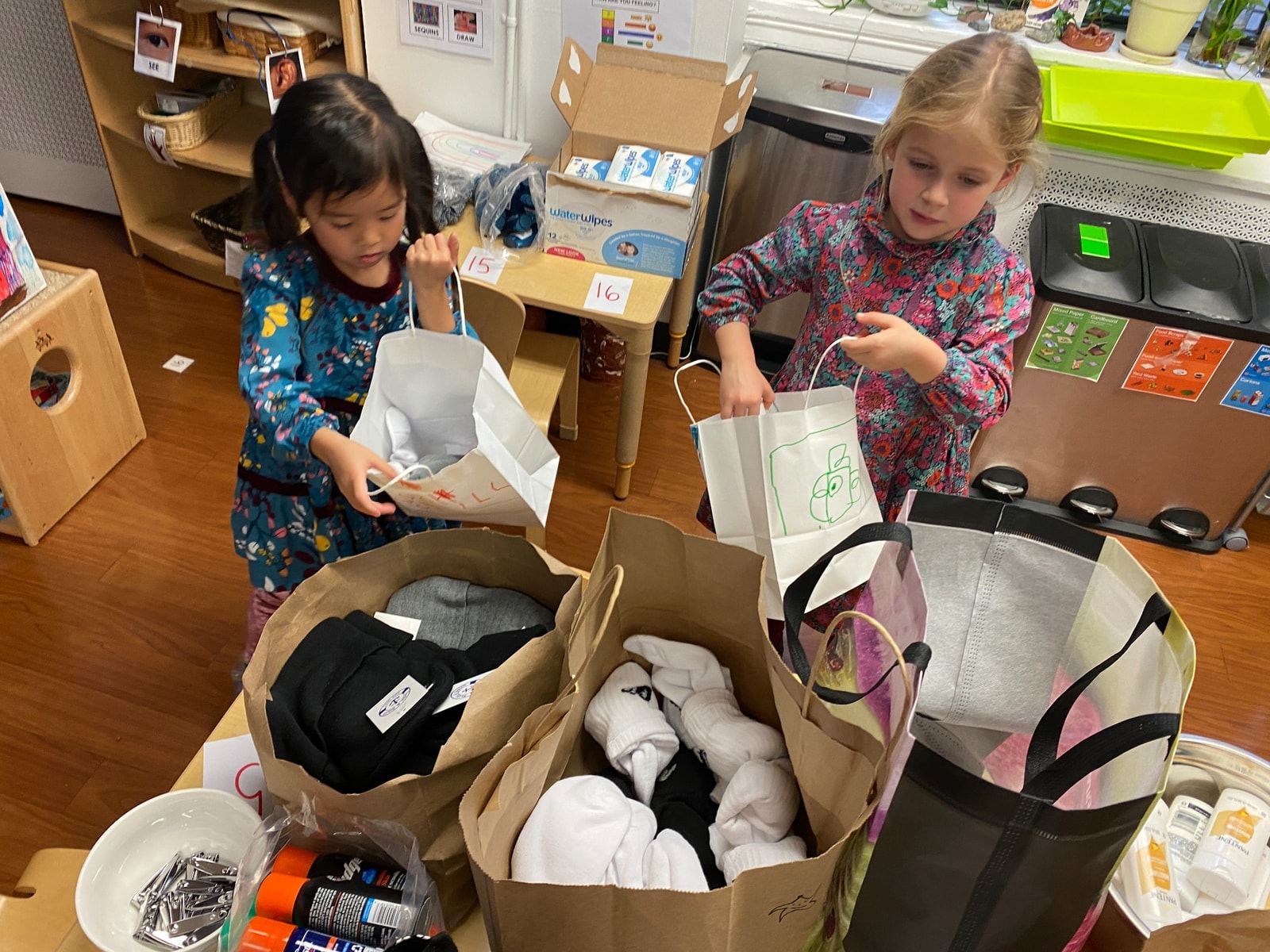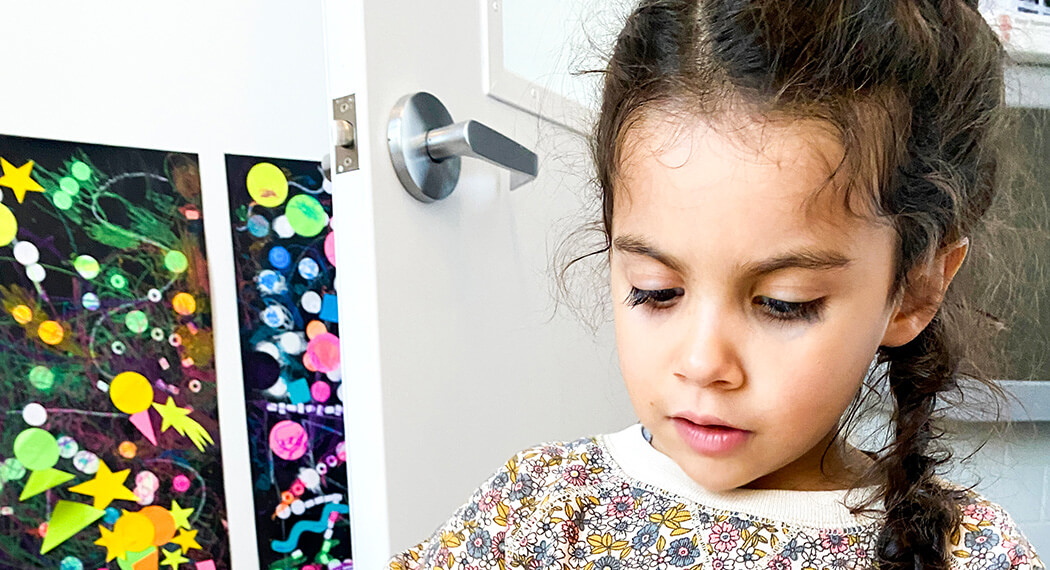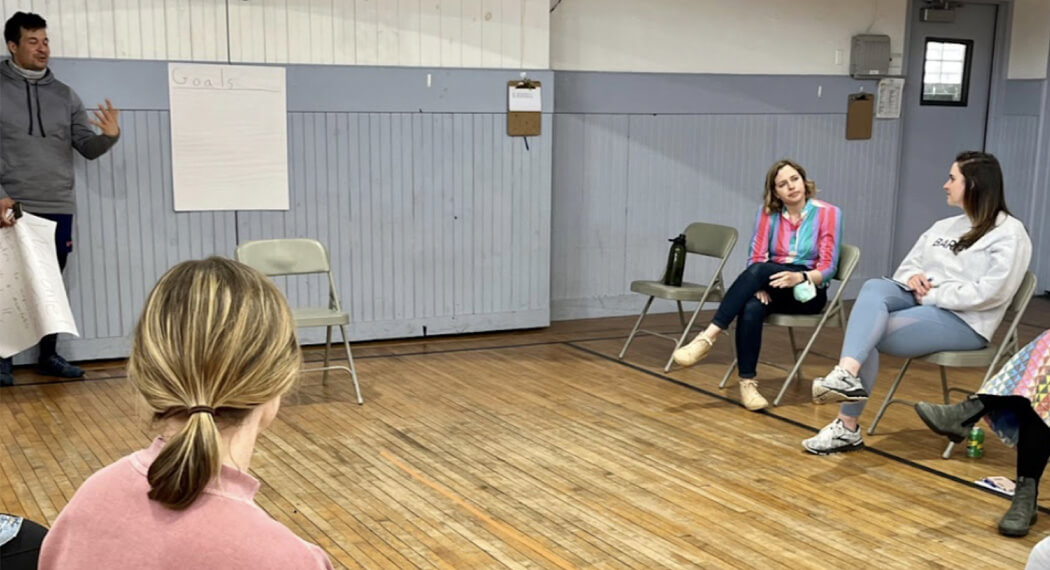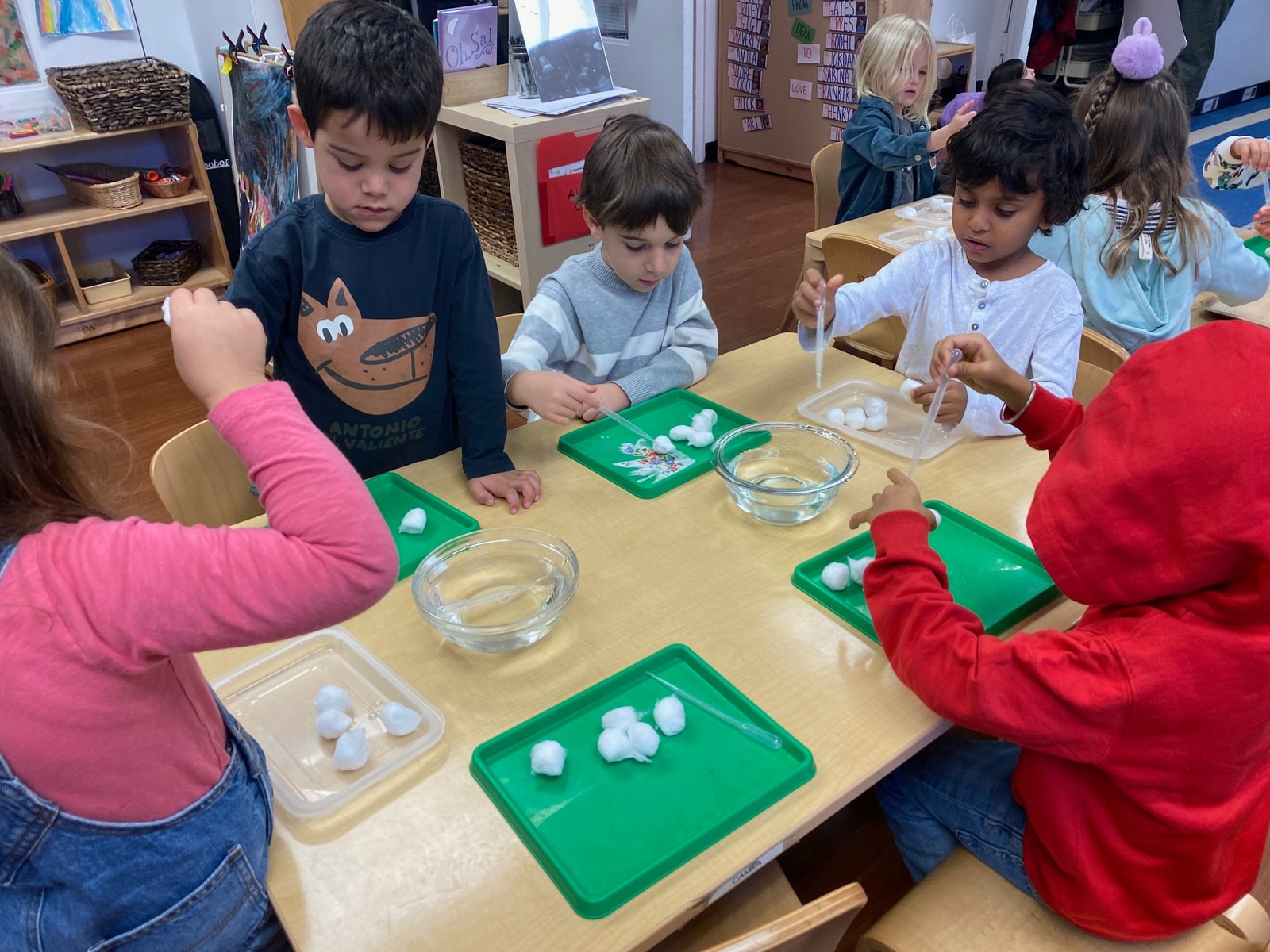The Rainbows continued their exploration of the water cycle by examining clouds and their saturation point. To model the saturation point of a cloud, the students used cotton balls, water, and a pipette. They predicted how many drops of water it would take to thoroughly saturate the cotton ball “cloud” so that gravity would produce “rain.”
Before testing their predictions, The Rainbows listened to the story Little Rain Drop by Gina Maldonado and discussed what they remembered about clouds, precipitation, and the water cycle. They talked about rainfall and evaporation, which they learned about last week, and then they learned a new word: transpiration. Transpiration is the process of water moving through a plant combined with the evaporation that occurs through the stem, leaves, and flowers.
In this exploration, they were examining the saturation point. They knew that clouds formed when air contained as much water vapor as it could hold, called the saturation point. Saturation can be reached through evaporation and condensation (which the children witnessed with their Water Cycle in a Bag exploration). With saturation, moisture becomes visible water droplets in the form of clouds. The next step requires gravity. The moisture in the clouds becomes heavy and is dragged down to the earth’s surface by gravity. This occurs as water droplets or as ice crystals (precipitation).
Before starting, each student predicted how many drops of water it would take to saturate the cotton ball “cloud” fully. they carefully counted out their drops, checking to see when the cotton ball was so full of water that it could no longer hold the water and started to “rain.” Students tested more than one cotton ball “cloud” to explore whether or not their predictions were correct.







